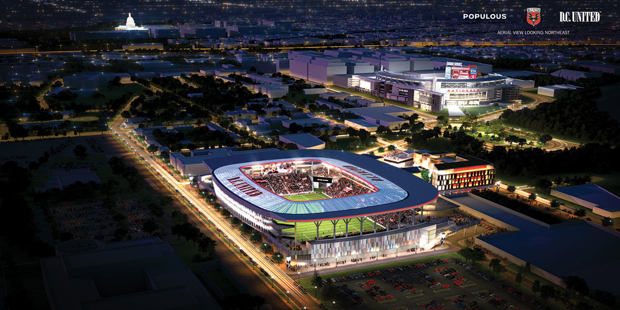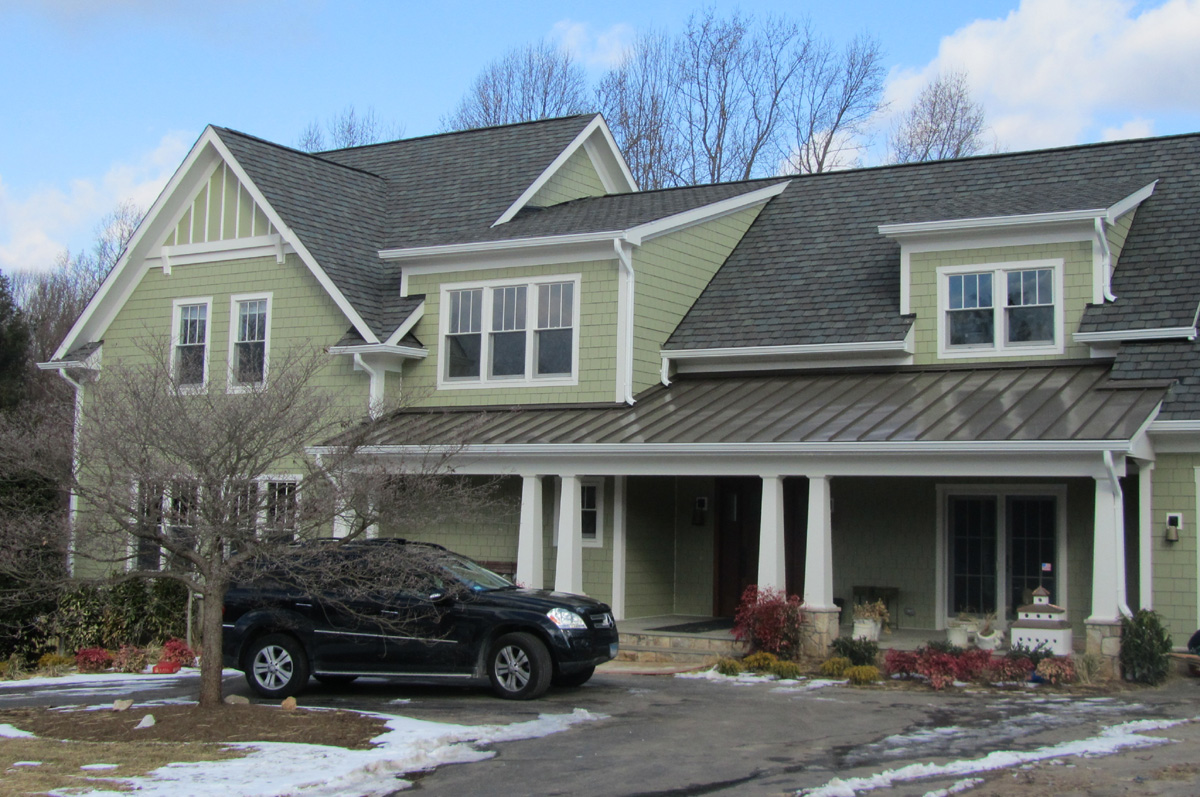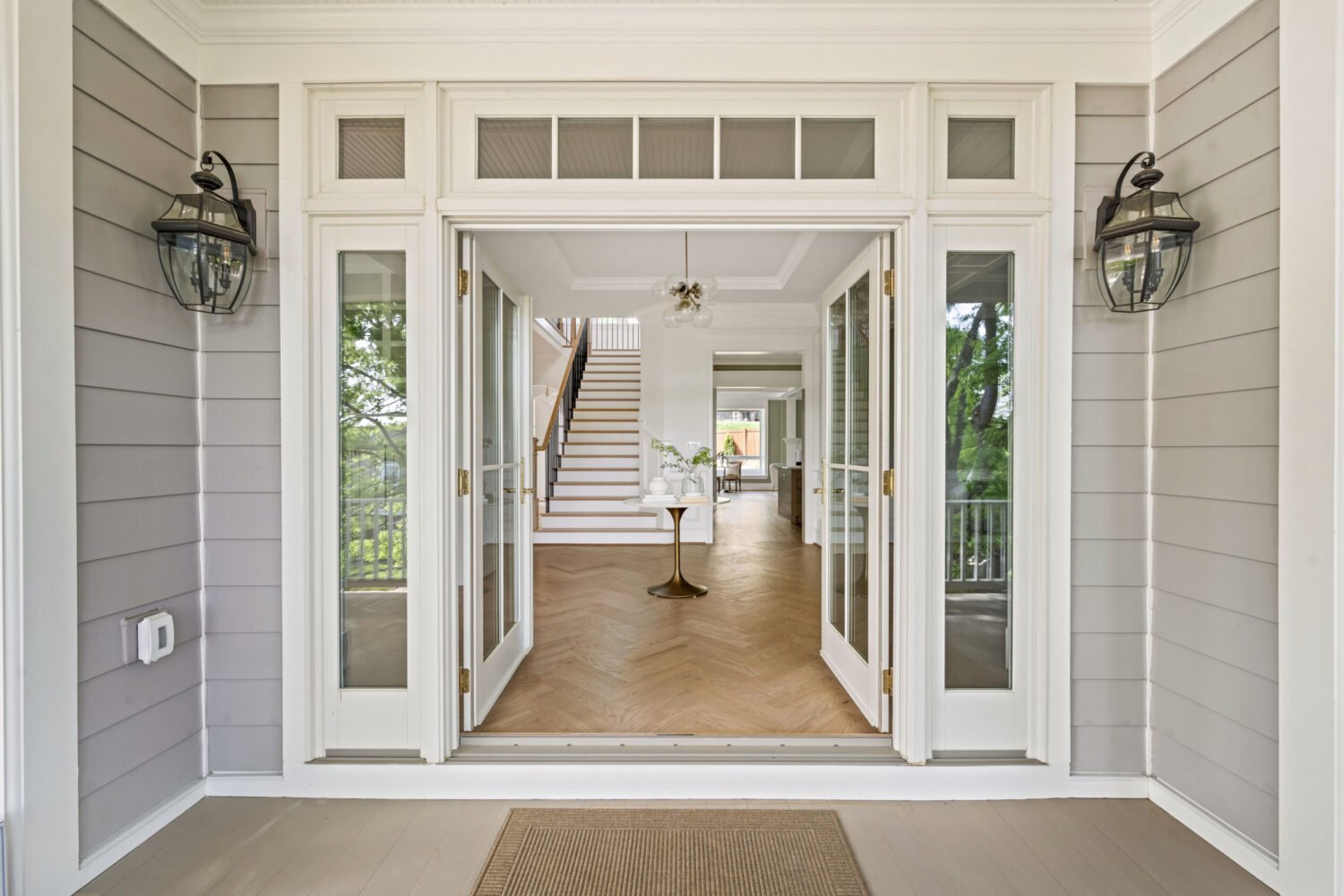Thursday is a big day for Washington’s soccer fans, and not just because of today’s pivotal World Cup match. The DC Council is finally holding its first hearing on the stadium Mayor Vince Gray wants the city to help DC United build on Buzzard Point in Southwest.
It’s been about a year since Gray, City Administrator Allen Lew, and DC United’s owners signed an agreement under which the District government would assemble the nine-acre stadium plot through a series of land swaps and provide adequate roads and utilities for a team-financed arena. Today’s hearing, a joint meeting of three Council committees that oversee government operations and the city’s finances, is the first of what Chairman Phil Mendelson predicts will be many. Here are a few things worth knowing:
The DC United stadium is a Vince Gray legacy project: Gray’s lame-duck period might be a lot less lame if he can get his stadium plan through the Council before his term expires at the end of the year. Someone else will be mayor when and if the stadium opens, possibly in time for the 2018 Major League Soccer season, but getting the legislature’s approval of the stadium deal would give Gray a brick-and-mortar feather to stick in his one-term cap.
The city’s end is more expensive than Gray’s people let on: Under the term sheet it signed with United last year, the DC government will spend up to $150 million in land swaps and cash to assemble and prepare the stadium plot. The most costly chunk concerns two acres on Buzzard Point owned by the development firm Akridge. In return for its piece, plus cash, Akridge gets the Frank D. Reeves Municipal Center, a city-government complex at 14th and U streets, Northwest, to transform into a high-value mixed-use development. But the value of the Reeves Center is widely disputed. Gray’s team is giving Akridge a purchase price of $56 million; DC Chief Financial Officer Jeffrey DeWitt says the Reeves Center is worth $76 million. When the stadium plan was first announced, the building was assessed at $128 million.
Along with $40 million in property tax breaks the city plans to give United over a 30-year lease and an estimated $20 million to move crucial city services out of the Reeves Center, the true cost to city taxpayers could approach $230 million.
The land swaps got ugly: The District has moved Akridge and Pepco out of Buzzard Point with the promise of city-owned land, but the deal for the rest of the stadium plot—owned by the investor Mark Ein and Super Salvage, a 62-year-old junkyard—was contentious. City officials threatened to use eminent domain against Ein and Super Salvage before settling on paying $50 per square foot for their properties, which Ein said last month is below-market.
Council members are skeptical of the deal: Mayoral candidates Muriel Bowser and David Catania are both generally supportive of building a stadium, but they have both questioned the logic the Reeves Center swap. Bowser, who runs the Economic Development committee, will hold a separate stadium hearing after the completion of a $200,000 economic impact study the Council ordered up last month. Catania told the Washington Post this month he believes the Reeves Center should be “uncoupled” from the stadium. Catania and Bowser aren’t alone in their hesitation about the land swap.
Other Council members are backing away for the stadium deal for other reasons. Tommy Wells, who was an early supporter of the stadium plan because it would benefit his Ward 6, turned against it after the Council’s budget made deep cuts to funding for the streetcar system, which is designed to eventually serve the area around the stadium.
DC United is packing the house: Unite for DC, a stadium support group the team organized, is packing the John A. Wilson Building with black-and-red faithful. More than 70 people signed up to testify before the Council, most of them soccer fans giddy at the prospect of a new stadium, including United head coach Ben Olsen. The team says it will also be feeding its fans throughout the day with treats from District Doughnuts and Ben’s Chili Bowl, which could add a new aroma to the fusty Wilson Building.
The team needs a new stadium: Most MLS teams play in newer, soccer-specific stadiums or relatively modern NFL stadiums. United plays its home games in 53-year-old RFK Stadium, a decrepit American football coliseum with few concessions for fans and limited amenities for players. While the current ownership group says it is committed to finding a home in the District, the franchise has flirted in the past with Prince George’s County and Baltimore. DC United also says it has lost money every year it has played at RFK.
No breaking for the World Cup: While many workplaces expect to see a massive drop in productivity for about 90 minutes (plus stoppage time) at noon today, the DC Council isn’t one of them. Despite the high likelihood that the stadium hearing will overlap with the US-Germany match, Mendelson says today’s hearing will not take a break. But soccer fanatics stuck at the Wilson Building aren’t out-of-luck. Gray’s office is turning his press briefing area into a screening room for the game.


















